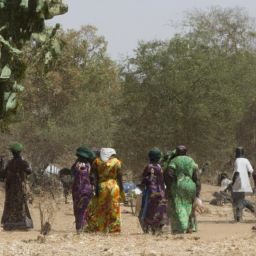How does the diversity of ethnic groups within Senegal contribute to its culture and society?
Ethnic Groups in Senegal
Senegal is home to several ethnic groups, with each group having its own distinctive cultural identity. Senegalese people are divided into four primary ethnic groups, each of which has their own history and ancestry.
The Wolof
The Wolof are the largest ethnic group in Senegal at 35-40%, making up the majority of the population. They are primarily located in the western and central regions of the country. Historically, the Wolof have been the rulers of Senegal and parts of what is now Mauritania, having once been a powerful kingdom in the region. The Wolof language is the most widely spoken of all the ethnic groups in Senegal.
The Serer
The Serer are the second largest ethnic group in the country, making up 15-20% of the population. They are mainly located in the northwestern region of Senegal, stretching from northwest of Dakar, along the coast to southward around the Joal area and inland towards Diourbel. The Serer language is closely related to the other Niger-Congo languages, and traditionally the Serer practice a religion called Serer religionwhich combines ancestral worship, Islam, and Christianity.
The Fula
The Fula people, also known as Fulani, make up around 10-15% of the population. They are an African ethnic group spread throughout the West African region. In Senegal, they are mainly located in the rural areas in the southern and eastern parts of the country. The Fula are predominantly Muslim and they speak the Fulani language which is a Niger-Congo language.
The Jola
The Jola people make up roughly 10% of the population in Senegal and are mainly found in the southern-most part of Senegal, along the borders of the Gambia. The Jola are mainly animist in religion and the predominant language spoken is Diola.
Other Minority Groups
In addition to the four main ethnic groups in Senegal, there are also several minority groups which include the Mandinka, Diola, Soninke, and Pulaar people. These groups are generally found in small numbers throughout the country, with the Diola being mainly found in the Casamance region.
Conclusion
Senegal is home to a wide variety of ethnic groups, each with their own unique culture and traditions. These groups include the:
- Wolof
- Serer
- Fula
- Jola
- Mandinka
- Diola
- Soninke
- Pulaar
Understanding the different ethnic groups in Senegal will help improve one’s ability to respect and appreciate the country’s culture and traditions.
Located in West Africa on the Atlantic coast, the Republic of Senegal is home to one of the most diverse populations in the region. The country’s population is largely composed of ethnic groups who together make up more than 40 distinct tribes in the nation.
The largest ethnic group in Senegal is the Wolof, who make up nearly 40% of the population. The Wolof are a traditionally Muslim people whose culture and traditions have been deeply shaped by a mixture of Islamic and indigenous beliefs. Their language, Wolof, is the most widely spoken language in Senegal and serves as one of the official language of the country.
The second largest ethnic group in Senegal is the Serer, who comprise around 30% of population. Like the Wolof, the Serer are a traditionally Muslim people, but their habits and customs are quite different from those of the Wolof. The Serer are mostly composed of small, independent farming and fishing communities who inhabit the southern and western parts of Senegal.
Fulani is the third most prominent ethnic group in Senegal and is divided into two distinct groups: the Nomadic or “Town Fulani”, who live in small villages and towns, and the Peasant Fulani, who are mostly farmers. The Nomadic Fulani are believed to have migrated to the region more than 500 years ago, and the Peasant Fulani have developed their own distinct language and culture. The Fulani constituting the fourth largest ethnic group in Senegal and they are largely concentrated in the east and north of the country.
The fifth largest ethnic group in Senegal are the Jola people, who inhabit the Casamance region in the southwest part of the country. The Jola are mainly farmers and fishermen who possess a unique culture and language distinct from the Wolof, Serer and Fulani.
Finally, the sixth largest ethnic group in Senegal is the Diola people, who inhabit the southeastern region of Casamance. Like the Jola, the Diola are largely farmers and fishermen, but their language and culture are quite distinct.
Ethnic diversity is one of the defining characteristics of Senegal’s culture and has contributed to its social and political development over the years. Each of the distinct ethnic groups inhabiting the country has preserved their own language, traditions and culture, creating a dynamic and vibrant social landscape.
